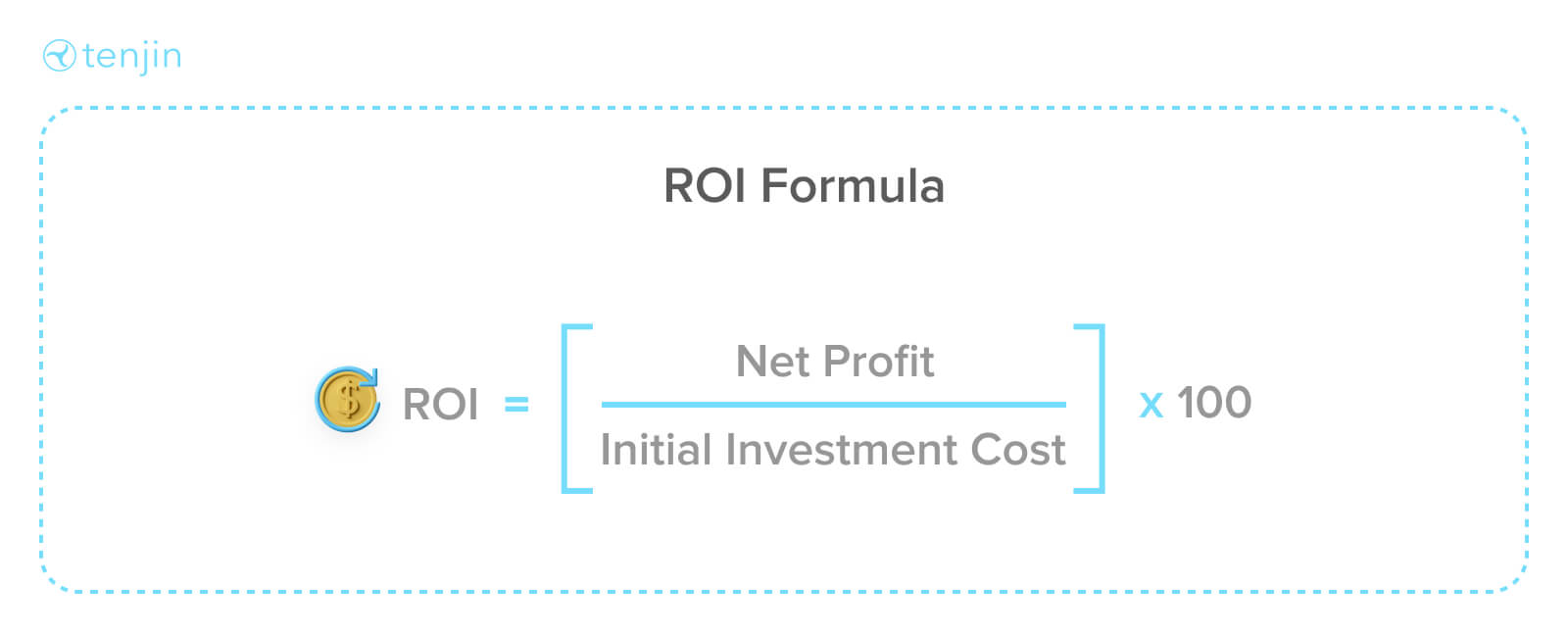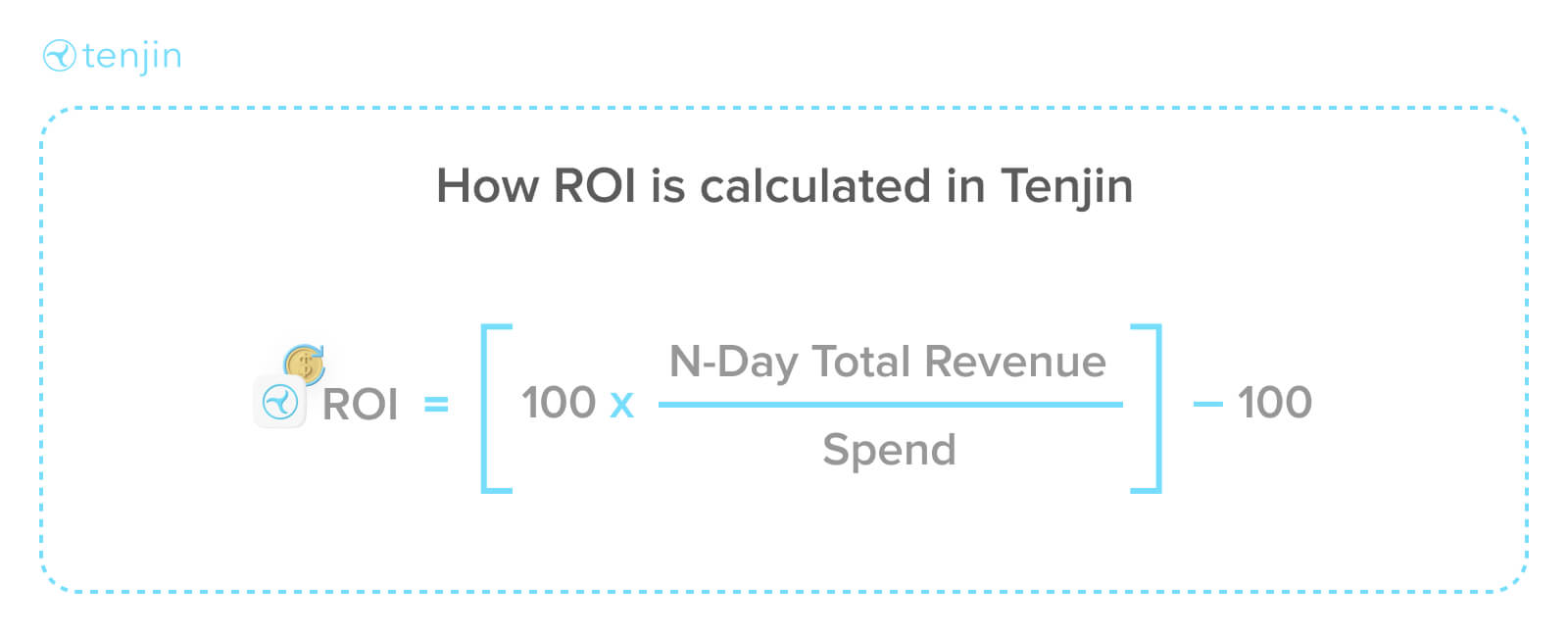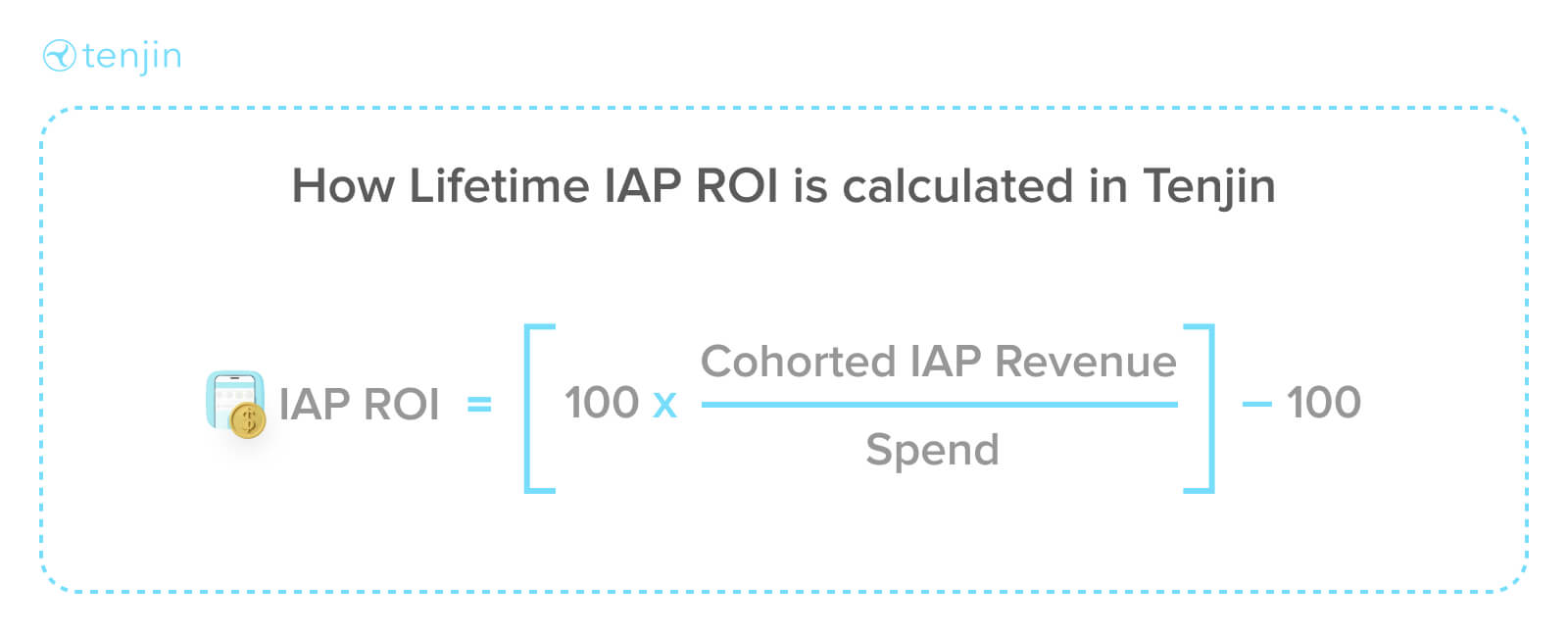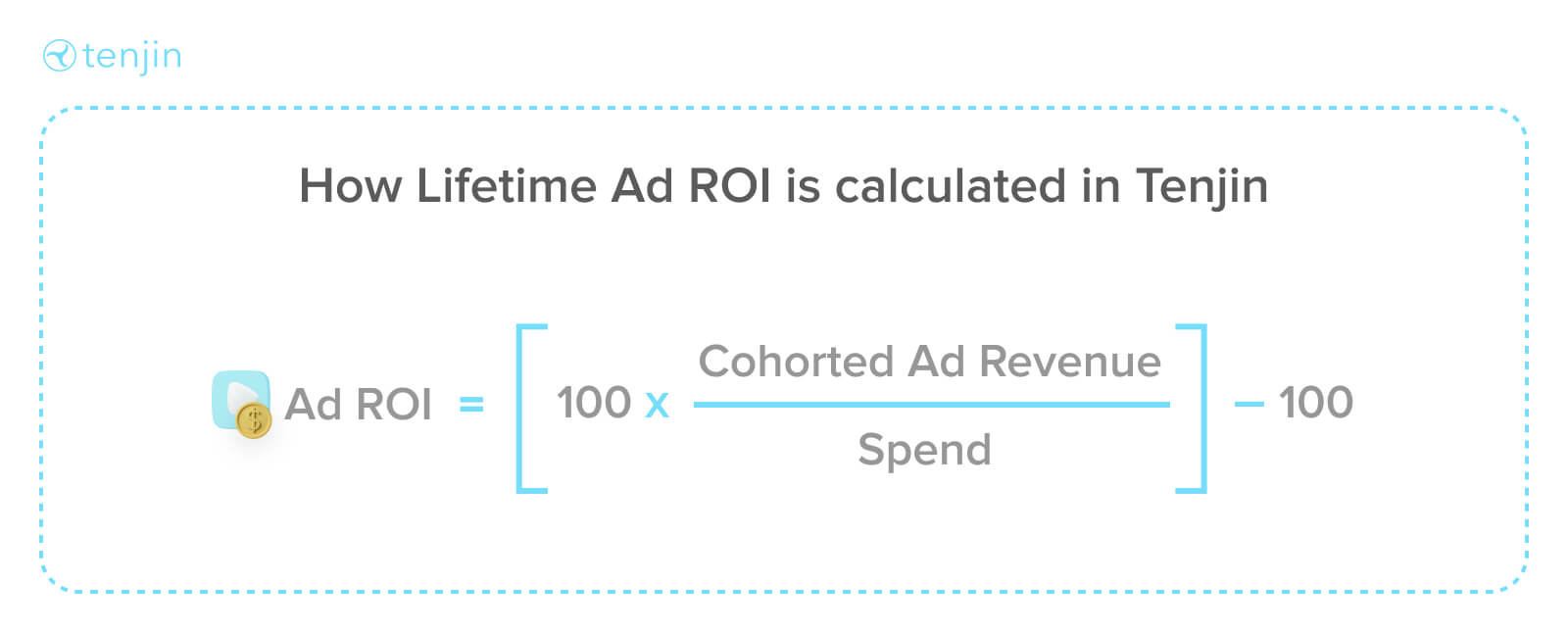Return on Investment (ROI) is a measure of the profitability of an investment. It is typically expressed as a percentage and calculated by dividing the amount of money gained or lost (net profit) by the initial investment cost.
What is a good ROI?
A good ROI depends on the type of investment being measured. Generally, a higher ROI is better, and a low ROI may indicate an unprofitable investment. For example, a typical ROI for a stock market investment might range between 10-20%, while a real estate investment might range between 5-15%.
How do you calculate ROI?
ROI is calculated by taking the net profit of an investment and dividing it by the initial investment cost. The formula is as follows:

For example, if an investor spends $500 on a stock market investment and after one year the net profit is $750, the ROI is calculated as follows:
ROI = ($750 / $500) x 100
ROI = 150%
How is ROI calculated in Tenjin?
The average N-Day ROI percentage is calculated in Tenjin by taking the amount of cumulative total profit (total revenue N days after install - spend) divided by spend.

What ROI metrics are included in the Tenjin dashboard?
You can find the full list of ROI metrics in the Tenjin dashboard, and their description here.
What are the benefits of calculating ROI?
Calculating ROI helps investors to determine the efficiency of their investments, and serves as a guide when deciding which investments to make. Investors can use ROI to compare different investment options and choose the one that promises the highest return. Additionally, ROI helps investors track the performance of an investment over time and identify areas for improvement.
What are the limitations of calculating ROI?
One of the main limitations of calculating ROI is that it does not factor in the time value of money. This means that ROI does not take into account the length of time it takes for an investment to generate a return. Additionally, ROI does not factor in any associated costs or risks, such as transaction costs or market volatility. As such, ROI should be used as one of many metrics when evaluating investments.
What is Lifetime IAP ROI?
Lifetime IAP ROI refers to the return on investment (ROI) generated by in-app purchases (IAPs) over the lifetime of a user. This metric is used to measure the long-term profitability of an app and helps app developers to understand the value of their users over time.
Lifetime IAP ROI takes into account all the IAPs made by a user from the time they first download the app to the time they stop using it. By calculating the total revenue generated by a user's IAPs and dividing it by the cost of acquiring and retaining that user, app developers can determine the lifetime value of that user.
Measuring lifetime IAP ROI can help app developers to identify which users are most valuable to their business and optimize their user acquisition and retention strategies accordingly. By focusing on acquiring and retaining high-value users, app developers can maximize the long-term profitability of their app.
At Tenjin, the Lifetime IAP ROI represents the cohorted IAP ROI for a certain date range, and is calculated using the following formula:

What is Lifetime Ad ROI?
Lifetime Ad ROI (Return on Investment) is a metric used to measure the total value generated by an advertising campaign over the lifetime of a user. This metric takes into account all the revenue generated by a user who was acquired through an advertising campaign, including both the initial purchase and subsequent purchases made over time.
To calculate Lifetime Ad ROI, the total revenue generated by users acquired through the advertising campaign is divided by the total cost of the campaign. The result is a ratio that indicates the return on investment for the advertising campaign.
For example, if an advertising campaign cost $10,000 and generated $50,000 in revenue from users who were acquired through the campaign, the Lifetime Ad ROI would be 5 (i.e., $50,000 in revenue divided by $10,000 in cost).
Measuring Lifetime Ad ROI can help advertisers to understand the long-term impact of their advertising campaigns and optimize their marketing strategies accordingly. By focusing on acquiring users who have a high lifetime value, advertisers can maximize the return on their advertising investment and improve the overall performance of their campaigns.
At Tenjin, the Lifetime Ad ROI represents the average Ad ROI percentage, and is calculated using the following formula:
